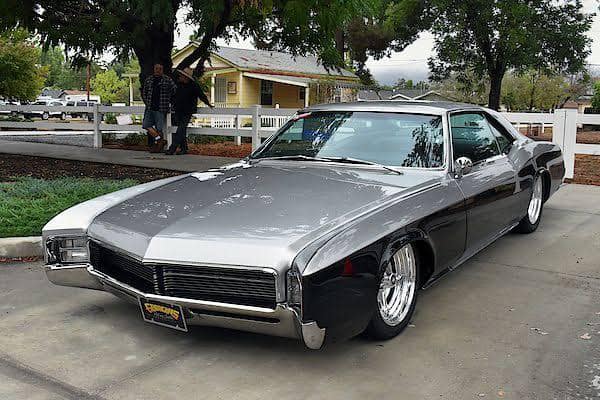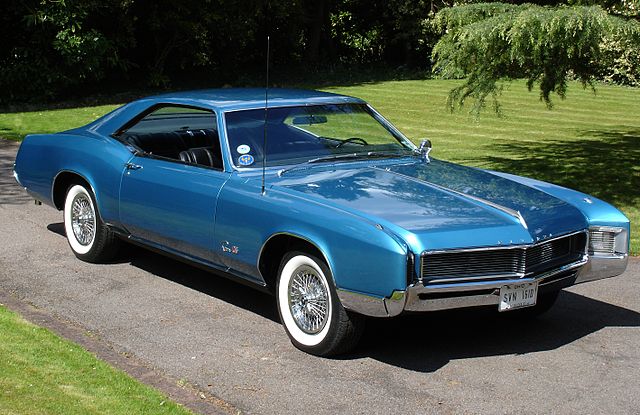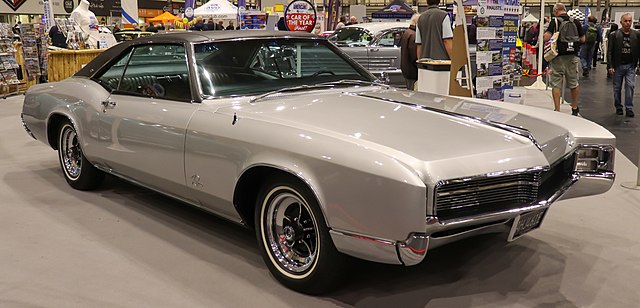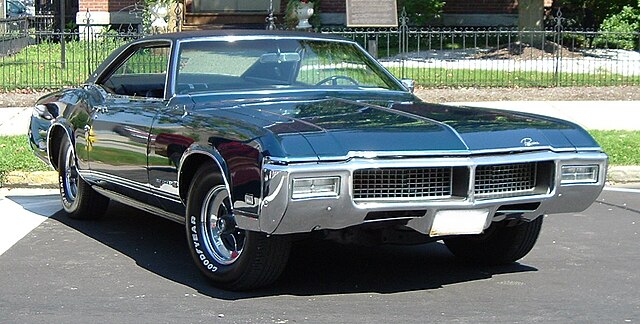
The Buick Riviera, a symbol of American luxury and performance, underwent a significant transformation during its second generation, produced from 1966 to 1970. This era marked a period of innovation and refinement for the Riviera, solidifying its status as a classic car icon.
This article delves into the design, performance, features, and legacy of the second-generation Buick Riviera.
Design and Styling

Exterior Design
The second-generation Buick Riviera introduced in 1966 featured a bold and distinctive design, departing from the first generation’s more conservative aesthetics. The new Riviera boasted a sleek, fastback roofline, a signature feature that became synonymous with the model. The long hood and short deck proportions, combined with sharply sculpted lines, gave the car an aggressive yet elegant stance.
One of the standout features of the 1966 Riviera was its hidden headlamps, which contributed to the car’s streamlined appearance. These headlights were concealed behind retractable covers, a design element that added to the vehicle’s futuristic appeal. The Riviera’s grille, with its fine horizontal bars, further emphasized its refined look.
Interior Design
Inside, the second-generation Riviera exuded luxury and sophistication. The interior was spacious, accommodating up to six passengers comfortably. High-quality materials, such as rich leather upholstery and real wood trim, were used extensively, creating an opulent environment. The dashboard design was driver-centric, featuring a wraparound layout that placed controls within easy reach.
Comfort was a priority in the Riviera’s design. The car offered power-adjustable seats, power windows, and an optional tilt steering wheel, ensuring that drivers and passengers alike could find their ideal seating positions. The attention to detail in the interior design underscored Buick’s commitment to providing a premium driving experience.
Performance and Mechanics

Engine Options
The second-generation Buick Riviera was renowned for its impressive performance capabilities. Initially, it came equipped with a 425 cubic inch (7.0-liter) V8 engine, known as the “Wildcat 465.” This engine produced 340 horsepower and 465 lb-ft of torque, providing ample power for spirited driving.
In 1967, Buick introduced a more powerful 430 cubic inch (7.0-liter) V8 engine, which delivered 360 horsepower and 475 lb-ft of torque.
By 1970, the Riviera offered the formidable 455 cubic inch (7.5-liter) V8 engine, generating 370 horsepower and an astounding 510 lb-ft of torque. This engine cemented the Riviera’s reputation as a high-performance luxury car, capable of impressive acceleration and top speeds.
Transmission and Handling
All second-generation Rivieras came standard with a three-speed Turbo-Hydramatic automatic transmission, known for its smooth and responsive shifting. The car’s handling was further enhanced by its advanced suspension system, which included independent front suspension and a live rear axle with coil springs. This setup provided a comfortable ride while maintaining excellent road-holding capabilities.
Buick also offered an optional Gran Sport (GS) package, which included performance upgrades such as a higher final drive ratio, heavy-duty suspension components, and a positraction rear differential. The GS package made the Riviera even more capable on winding roads and improved its overall driving dynamics.
Features and Innovations

Advanced Technology
The second-generation Riviera was ahead of its time in terms of technology and features. It offered a range of advanced options, including:
- Cruise Control: A relatively rare feature in the 1960s, cruise control allowed drivers to maintain a constant speed on highways, enhancing comfort on long journeys.
- Automatic Climate Control: This innovative system allowed occupants to set a desired temperature, with the car automatically adjusting the heating and cooling to maintain that temperature.
- Power Accessories: The Riviera came with power-operated windows, seats, and mirrors, adding to the convenience and luxury of the vehicle.
- Tilt Steering Wheel: This feature allowed drivers to adjust the steering wheel’s angle for optimal comfort and control.
Safety Features
Safety was also a priority for the second-generation Riviera. It included several safety features that were advanced for its time:
- Front Disc Brakes: From 1967 onward, the Riviera was available with front disc brakes, providing improved stopping power compared to traditional drum brakes.
- Energy-Absorbing Steering Column: This feature was designed to reduce the risk of injury in the event of a collision by collapsing upon impact.
- Dual-Circuit Brake System: This system ensured that even if one brake circuit failed, the other would still function, providing added safety.
Market Reception and Legacy

Sales and Popularity
The second-generation Buick Riviera was well-received by both critics and consumers. Its blend of performance, luxury, and innovative features made it a popular choice among car enthusiasts and affluent buyers. Sales figures were strong throughout its production run, with the 1966 model year being particularly successful, selling over 45,000 units.
Influence on Future Models
The design and engineering innovations of the second-generation Riviera had a lasting impact on the automotive industry. Its sleek fastback design influenced the styling of other luxury coupes, and its advanced features set new standards for what consumers could expect in a premium vehicle.
The success of the Riviera also helped solidify Buick’s reputation as a manufacturer of high-quality, performance-oriented luxury cars.
Collectibility and Value
Today, the second-generation Buick Riviera is highly sought after by classic car collectors. Its distinctive design, powerful engines, and luxurious features make it a prized addition to any collection. Well-preserved examples, particularly those with rare options such as the Gran Sport package, can command high prices at auctions and in the classic car market.
Conclusion
The second-generation Buick Riviera (1966 – 1970) remains a testament to American automotive ingenuity and style. With its striking design, powerful performance, and luxurious features, it exemplified the best of what Buick had to offer during this era.
The Riviera’s legacy continues to be celebrated by car enthusiasts and collectors, ensuring that this classic car icon will be remembered for generations to come.
